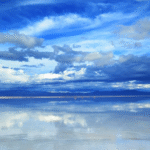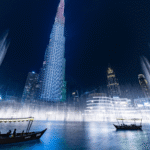Wonders of Malaysia in 2025– Malaysia is a country located in Southeast Asia, functioning as a federal constitutional monarchy. It consists of a total of 13 states and 3 federal territories. Geographically, the country is divided into two main regions by the South China Sea:
- Peninsular Malaysia – located on the Indochinese Peninsula.
- East Malaysia – located on the island of Borneo.
Peninsular Malaysia shares both land and maritime borders with Thailand, and maritime boundaries with Singapore, Vietnam, and Indonesia.
Meanwhile, East Malaysia shares land borders with Brunei and Indonesia, and maritime borders with the Philippines and Vietnam.
The national capital and largest city of Malaysia is Kuala Lumpur, which also serves as the seat of the federal legislative branch.
On the other hand, Putrajaya has been designated as the federal administrative capital of Malaysia — housing the executive branch (cabinet, federal ministries, and agencies) as well as the judicial branch of the federal government.
Wonders of Malaysia in 2025-
| Petronas Twin Towers | Kuala Lumpur |
| Kota Kinabalu | Langkawi |
| George Town | Malacca |
| Taman Negara | Batu Caves |
| Bako National Park | Gunung Mulu National Park |
Wonders of Malaysia in 2025, Which Included-
Malaysia in 2025 offers travelers a wide range of attractions, from bustling modern cities to tranquil islands and lush rainforests.
- Kuala Lumpur, the capital city, is a must-visit for its iconic Petronas Twin Towers, modern architecture, and vibrant shopping destinations.
- Penang is renowned for its delicious street food, rich cultural heritage, and historic landmarks such as George Town.
- Langkawi, a beautiful archipelago, is known for its stunning beaches, water sports, and breathtaking natural scenery.
- For nature lovers, the regions of Sabah and Sarawak on Borneo Island offer unique wildlife, ancient rainforests, and adventurous outdoor experiences.
Malaysia continues to captivate visitors with its diversity of experiences, vibrant culture, flavorful cuisine, and natural beauty.
1. Petronas Twin Towers–

The Petronas Towers, also known as the Petronas Twin Towers or informally as the KLCC Twin Towers, are a pair of 88-story supertall skyscrapers located in Kuala Lumpur, the capital of Malaysia. These iconic towers stand at a height of approximately 451.9 meters (1,483 feet).
From 1996 to 2004, the Petronas Towers held the title of the tallest buildings in the world until they were surpassed by Taipei 101. However, they still remain the tallest twin towers in the world, having once overtaken the original World Trade Center towers in New York City.
Until 2021, the Petronas Towers were the tallest buildings in Malaysia, a title now held by Merdeka 118. Alongside the nearby Kuala Lumpur Tower and Merdeka 118, the Petronas Towers form a distinctive part of the city’s skyline and can be seen from many parts of Kuala Lumpur.
2. Kuala Lumpur-
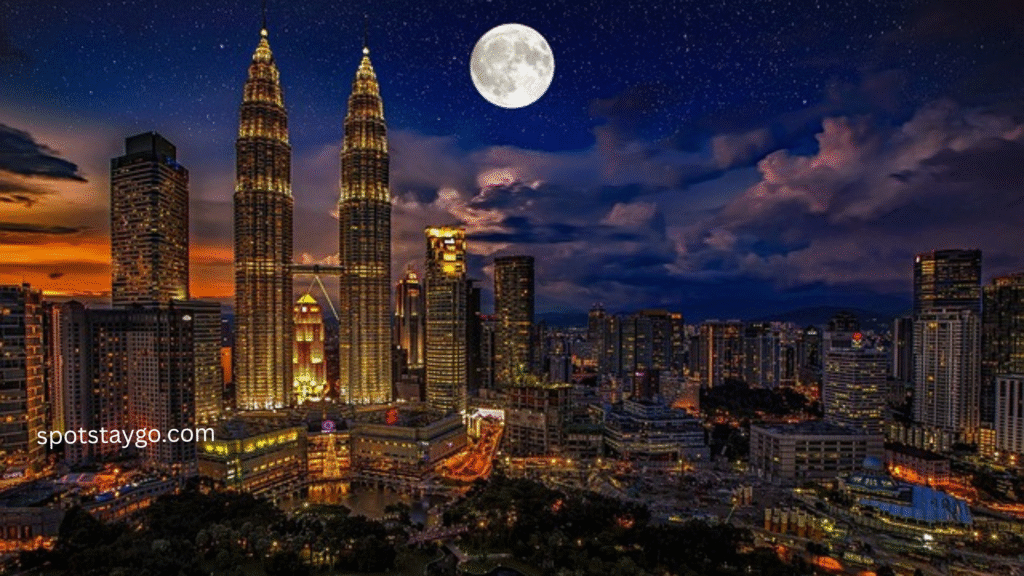
Kuala Lumpur (KL), officially known as the Federal Territory of Kuala Lumpur, is the capital city of Malaysia as well as a federal territory. It is the most populous city in the country, with an estimated 2024 census population of around 2,075,600. The city spans an area of approximately 243 square kilometers (94 square miles).
Greater Kuala Lumpur, often referred to as the Klang Valley, is a metropolitan region that, as of 2024, is home to approximately 8.8 million people. It is one of the fastest-growing metropolitan areas in Southeast Asia, both in terms of population growth and economic development.
3. Kota Kinabalu-
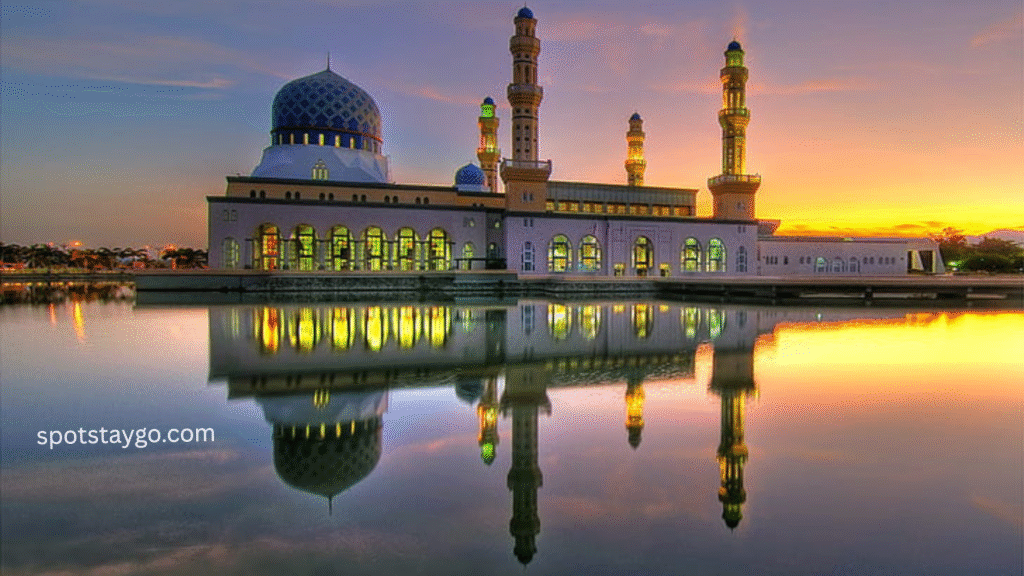
Kota Kinabalu, formerly known as Jesselton and commonly referred to as “KK”, is the capital city of the Malaysian state of Sabah. It serves not only as the capital of the Kota Kinabalu District but also of the West Coast Division of Sabah.
The city is located on the northwestern coast of Borneo Island, facing the South China Sea. To its west lies the Tunku Abdul Rahman National Park, and to its east is Mount Kinabalu — the iconic peak from which the city derives its name.
According to the 2010 census, Kota Kinabalu had a population of approximately 452,058. When nearby districts such as Penampang and Tuaran are included, the combined population of the metropolitan area reaches around 628,725.
4. Langkawi-
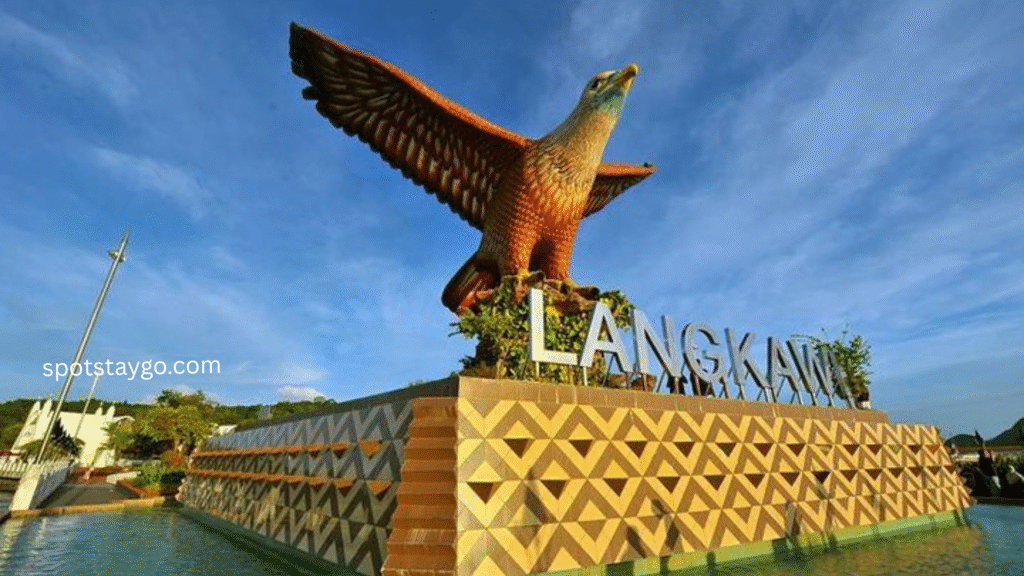
Langkawi, officially known as “Langkawi, the Jewel of Kedah”, is a duty-free island and part of an archipelago of 99 islands (plus five smaller islets that are visible only during low tide). It is located about 30 kilometers off the northwestern coast of Malaysia, near the Thailand border, and lies just south of Ko Tarutao Island.
Politically, Langkawi is an administrative district of the state of Kedah, with Kuah being its largest town.
Langkawi was developed as a tourist destination in the 1980s, and Pantai Cenang is not only the island’s most popular beach, but also its main tourist hub.
5. George Town-
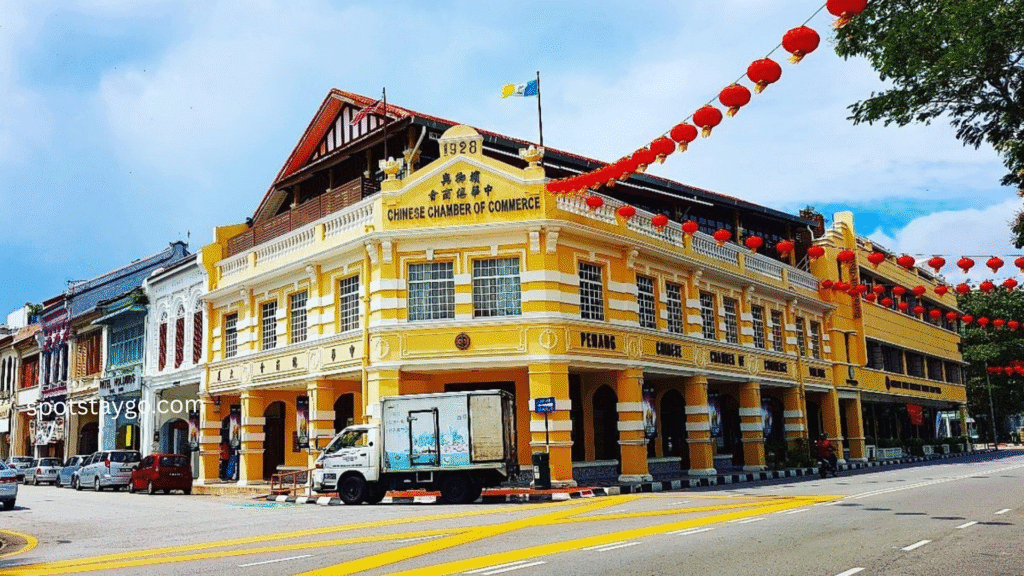
George Town is the capital city of the Malaysian state of Penang. It serves as the main hub of the George Town Conurbation, which is the second-largest metropolitan area in Malaysia, with a total population of approximately 2.84 million. It is also home to the country’s second-largest metropolitan economy.
The actual area of George Town spans around 306 square kilometers (118 square miles), including Penang Island and its surrounding smaller islets. According to the 2020 census, the city had a population of about 794,313.
6. Malacca-
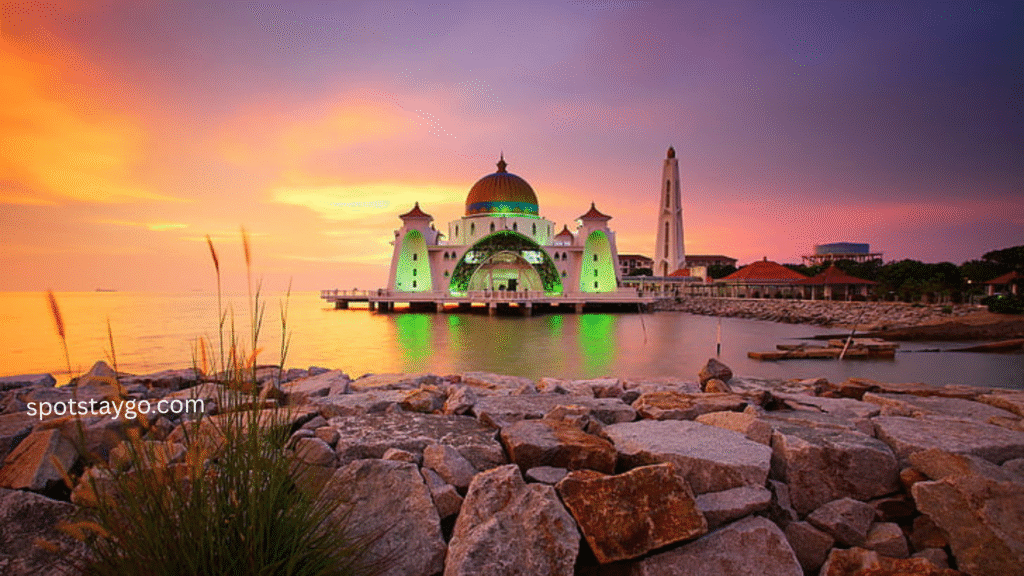
Malacca, officially known as the Historic State of Malacca, is a state in Malaysia located in the southern region of the Malay Peninsula, facing the Strait of Malacca. The state shares borders with Negeri Sembilan to the north and west, and Johor to the south. Additionally, a small exclave called Tanjung Tuan also lies to the north, bordering Negeri Sembilan.
The capital of Malacca is Malacca City, which was designated a UNESCO World Heritage Site on 7 July 2008.
Malacca features diverse tropical rainforests and has an equatorial climate. Located just south of the Titiwangsa Mountains, the state is mostly flat with the presence of several inselbergs (isolated rocky hills), the tallest of which is Bukit Gapis, the highest point in the state.
7. Taman Negara-
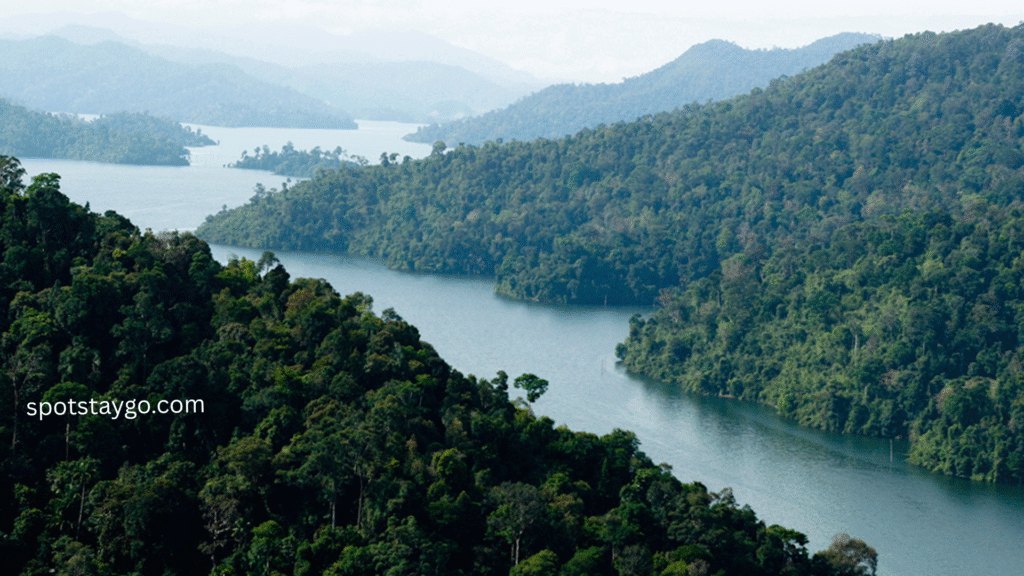
Taman Negara is a renowned national park located in Peninsular Malaysia. It was originally established between 1938 and 1939 as the King George V National Park. At that time, Theodore Hubback lobbied the sultans of Pahang, Terengganu, and Kelantan to set aside a portion of land from each of their states in order to create a protected area.
After Malaysia gained independence, the park was renamed “Taman Negara,” which means “National Park” in the Malay language.
8. Batu Caves-
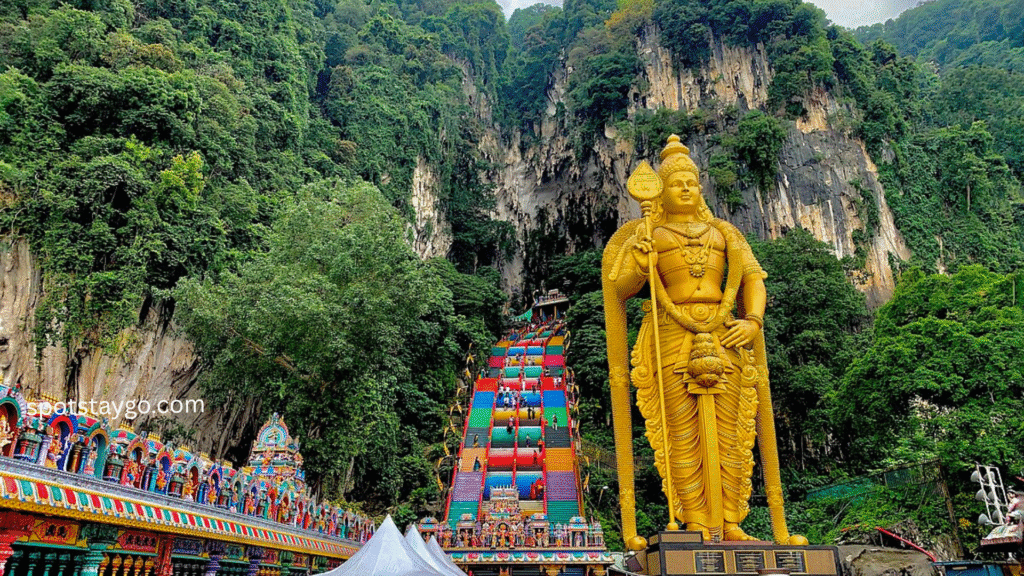
Batu Caves, located in the Gombak district of Selangor state, Malaysia, is a prominent limestone hill standing 325 meters high, featuring a series of limestone caves. It lies approximately 13 kilometers (8.1 miles) north of the capital city, Kuala Lumpur.
The cave complex houses several Hindu temples, the most famous being a temple dedicated to Lord Murugan. It serves as the central site for the Thaipusam festival, one of the most important celebrations for Tamil Hindus in Malaysia.
A major highlight of the site is the 43-meter (141-foot) tall statue of Lord Murugan located at the complex, which is considered one of the tallest statues of Murugan in the world.
9. Bako National Park-
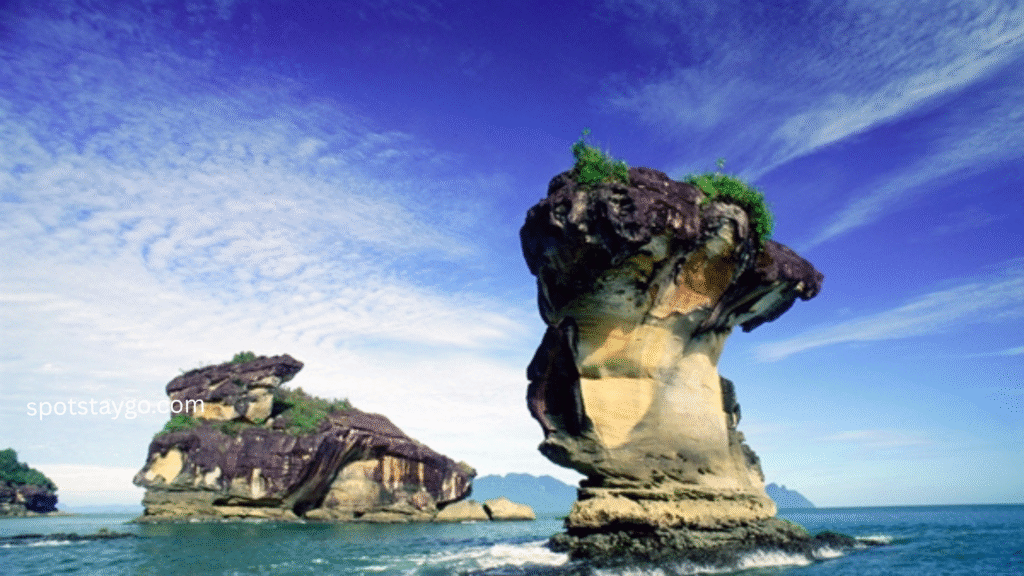
Bako National Park is a renowned national park located in the Kuching District of the Kuching Division in the state of Sarawak, Malaysia. Established in 1957, it is considered the oldest national park in Sarawak.
The park is situated at the tip of the Muara Tebas Peninsula, at the mouth of the Bako and Kuching rivers. It covers a total area of approximately 27.27 square kilometers (10.53 square miles). Bako National Park is located about 40 kilometers (25 miles) from Kuching city by road.
Over millions of years, the erosion of sandstone formations in the area has shaped a dramatic coastline of steep cliffs, rocky headlands, and white sandy coves, making the park a place of great natural beauty and geological richness.
10. Gunung Mulu National Park-
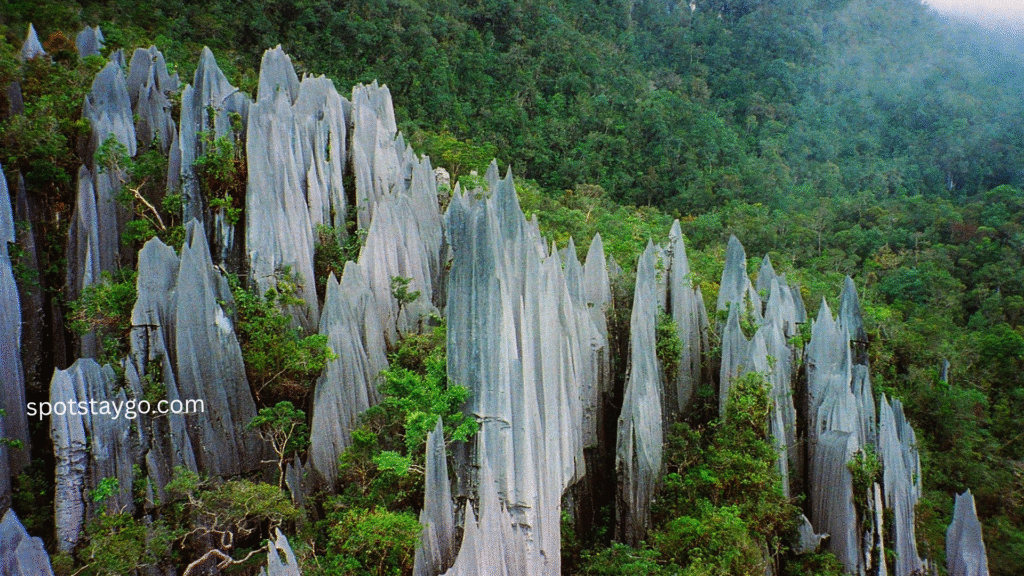
Gunung Mulu National Park, commonly known as Mulu National Park, is a renowned national park located in the Miri Division of the Sarawak state of Malaysia. It is a designated UNESCO World Heritage Site, celebrated for its dramatic limestone karst formations and expansive cave systems, all set within a mountainous equatorial rainforest.
The park is especially famous for the scientific expeditions that have explored its caves and surrounding rainforests. Among the most notable was the 1977–1978 Royal Geographical Society expedition, which involved over 100 scientists working for 15 months. This expedition initiated a series of more than 20 subsequent explorations, now collectively known as the Mulu Caves Project.
The park is named after Mount Mulu, the second-highest peak in Sarawak.
Top visa-free countries for Asian citizens in 2025
